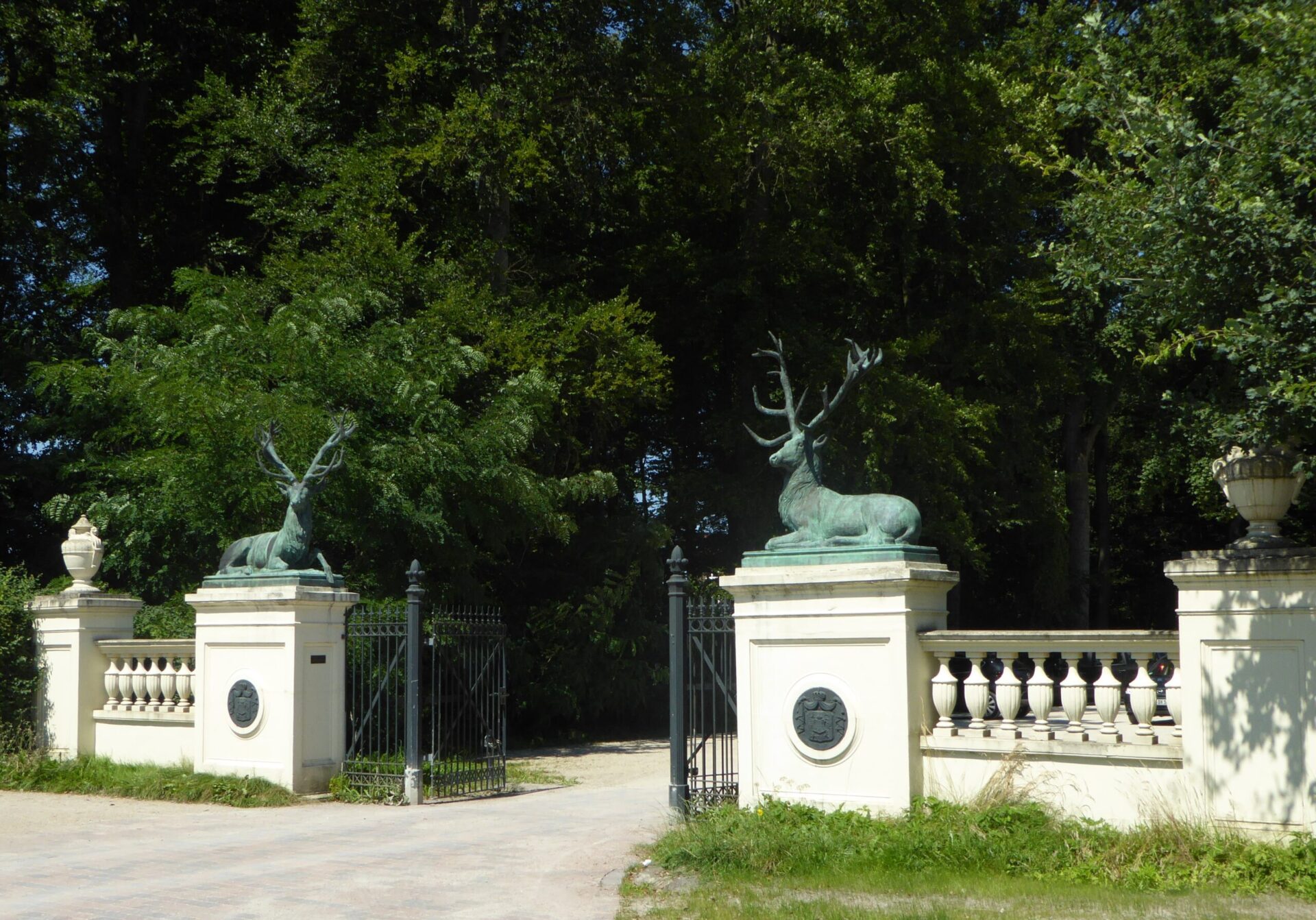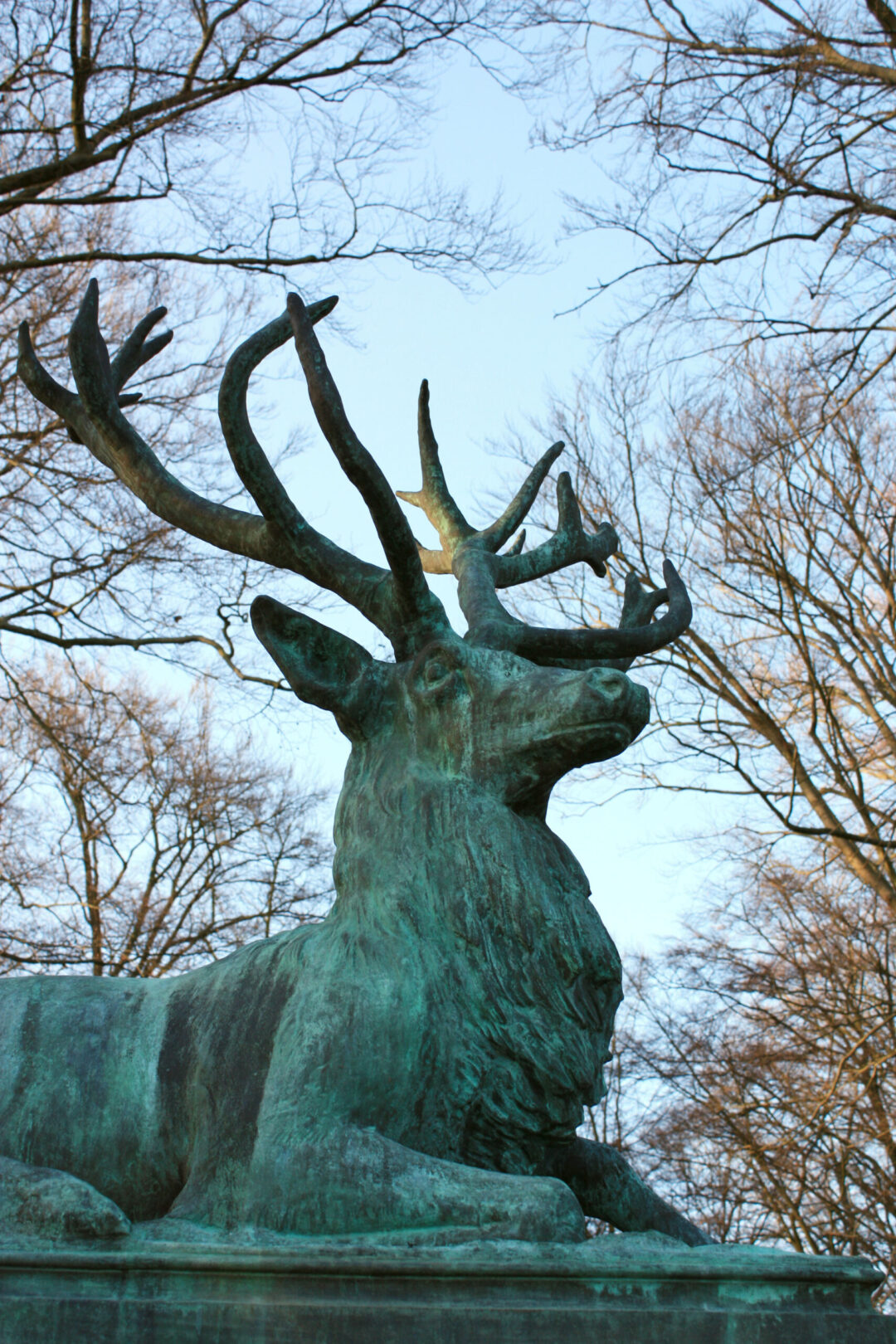The so-called “Hirschtor” (in English: deer gate) was once the gateway to the wildlife park of the Grand Dukes of Oldenburg. It is no coincidence that the deer is the decisive theme in this arrangement because, in the past, the princes used those parks for hunting, which was taken for granted as a social “pastime”.
Accordingly, a lot of red deer were settled here.
The gate dates back to 1870 and marks the new expansion of the palace park after a large-scale expansion arranged by Grand Duke Nikolaus Friedrich Peter.
The bronze deer are cast after a model by the sculptor Christian Rauch, one of the most famous representatives of classicist sculpture. Since the late 18th century, Classicism was considered equally tasteful and contemporary and was particularly appreciated by all Oldenburg dukes.
This art style reflects the very clear and unadulterated formal language of antiquity. Additionally, these reminiscences are clearly recognizable at the Deer Gate, whether it is the design of the majestic seated deer, the symmetrical pedestals and balustrades, or the antique-looking amphorae with the coat of arms of the Grand Duke.
The gate had stood here undamaged as an entrance to the castle park well beyond the reign of the Grand Dukes. After the Second World War, however, in times of economic need and shortage of raw materials, the deer suddenly disappeared. Apparently, they were stolen, probably to melt the metal. Not until the 1980s the monumental value of the Hirschtor was finally realised again. Thanks to a citizens' initiative, the gate was gradually restored in the following years so that today it faces us again in its original splendour.
By the way, Rastede is in excellent company — its gate has depictions of deer, also found in Potsdam. Furthermore, Rastede is often referred to as “the Oldenburg Sanssouci”.


